Mobile phone-based interventions for improving contraception use
- PMID: 37458240
- PMCID: PMC10363274
- DOI: 10.1002/14651858.CD011159.pub3
Mobile phone-based interventions for improving contraception use
Abstract
Background: Contraception provides significant benefits for women's and children's health, yet many women have an unmet need for contraception. Rapid expansion in the use of mobile phones in recent years has had a dramatic impact on interpersonal communication. Within the health domain text messages and smartphone applications offer means of communication between clients and healthcare providers. This review focuses on interventions delivered by mobile phone and their effect on use of contraception.
Objectives: To evaluate the benefits and harms of mobile phone-based interventions for improving contraception use.
Search methods: We used standard, extensive Cochrane search methods. The latest search date was August 2022.
Selection criteria: We included randomised controlled trials (RCTs) of mobile phone-based interventions to improve forms of contraception use amongst users or potential users of contraception.
Data collection and analysis: We used standard Cochrane methods. Our primary outcomes were 1. uptake of contraception, 2. uptake of a specific method of contraception, 3. adherence to contraception method, 4. safe method switching, 5. discontinuation of contraception and 6. pregnancy or abortion. Our secondary outcomes were 7. road traffic accidents, 8. any physical or psychological effect reported and 9. violence or domestic abuse.
Main results: Twenty-three RCTs (12,793 participants) from 11 countries met our inclusion criteria. Eleven studies were conducted in high-income resource settings and 12 were in low-income settings. Thirteen studies used unidirectional text messaging-based interventions, six studies used interactive text messaging, four used voice message-based interventions and two used mobile-phone apps to improve contraception use. All studies received funding from non-commercial bodies. Mobile phone-based interventions probably increase contraception use compared to the control (odds ratio (OR) 1.30, 95% confidence interval (CI) 1.06 to 1.60; 16 studies, 8972 participants; moderate-certainty evidence). There may be little or no difference in rates of unintended pregnancy with the use of mobile phone-based interventions compared to control (OR 0.82, 95% CI 0.48 to 1.38; 8 trials, 2947 participants; moderate-certainty evidence). Subgroup analysis assessing unidirectional mobile phone interventions versus interactive mobile phone interventions found evidence of a difference between the subgroups favouring interactive interventions (P = 0.003, I2 = 88.5%). Interactive interventions had an OR of 1.71 (95% CI 1.28 to 2.29; P = 0.0003, I2 = 63%; 8 trials, 3089 participants) whilst unidirectional interventions had an OR of 1.03 (95% CI 0.87 to 1.22; P = 0.72, I2 = 17%; 9 trials, 5883 participants). Subgroup analysis assessing high-income versus low-income trial settings found no difference between groups (subgroup difference test: P = 0.70, I2 = 0%). Only six trials reported on safety and unintended outcomes; one trial reported increased partner violence whilst another four trials reported no difference in physical violence rates between control and intervention groups. One trial reported no road traffic accidents with mobile phone intervention use.
Authors' conclusions: This review demonstrates there is evidence to support the use of mobile phone-based interventions in improving the use of contraception, with moderate-certainty evidence. Interactive mobile phone interventions appear more effective than unidirectional methods. The cost-effectiveness, cost benefits, safety and long-term effects of these interventions remain unknown, as does the evidence of this approach to support contraception use among specific populations. Future research should investigate the effectiveness and safety of mobile phone-based interventions with better quality trials to help establish the effects of interventions delivered by mobile phone on contraception use. This review is limited by the quality of the studies due to flaws in methodology, bias or imprecision of results.
Copyright © 2023 The Cochrane Collaboration. Published by John Wiley & Sons, Ltd.
Conflict of interest statement
Two review authors (CS and CF) were also study authors (Smith 2015b). When a review author was also a contributor to an included study, that review author was not involved in the risk of bias assessment and assessment of the certainty of the evidence.
TP: none.
SM: none.
MV: none.
AN: none.
CF: none.
CS: none.
Figures

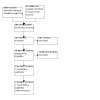


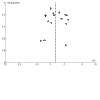


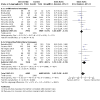
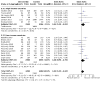



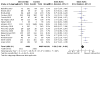

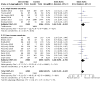



















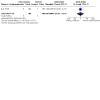












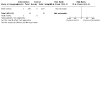






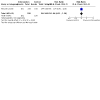






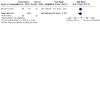




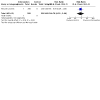









































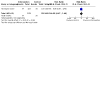













Update of
-
Mobile phone-based interventions for improving contraception use.Cochrane Database Syst Rev. 2015 Jun 26;2015(6):CD011159. doi: 10.1002/14651858.CD011159.pub2. Cochrane Database Syst Rev. 2015. Update in: Cochrane Database Syst Rev. 2023 Jul 17;7:CD011159. doi: 10.1002/14651858.CD011159.pub3. PMID: 26115146 Free PMC article. Updated.
References
References to studies included in this review
Babalola 2019 {published data only}
Biswas 2017 {published data only}
Brody 2022 {published data only}
-
- Brody C, Chhoun P, Tuot S, Fehrenbacher AE, Moran A, Swendeman D, et al. A mobile intervention to link young female entertainment workers in Cambodia to health and gender-based violence services: randomized controlled trial. Journal of Medical Internet Research 2022;24(1):e27696. [DOI: 10.2196/27696] - DOI - PMC - PubMed
Bull 2016 {published data only}
Castano 2012 {published data only}
Chernick 2017 {published data only}
Francis 2015 {published data only}
-
- Francis JK, Malbon K, Braun-Courville D, Linares LO. Adolescent female pregnancy intentions change four months after initiating contraception –possible cause for poor contraceptive continuation rates? Journal of Adolescent Health 2015;56:71-2.
Harrington 2019 {published data only}
Hebert 2018 {published data only}
-
- Hebert L, Hill B, Quinn M, Holl J, Whitaker A, Gilliam M. Mobile contraceptive application use in a clinical setting in addition to standard contraceptive counseling: a randomised controlled trial. Contraception 2018;98(4):281-7. [PMID: ] - PubMed
Hou 2010 {published data only}
Johnson 2017 {published data only}
-
- Johnson D, Juras R, Riley P, Chatterji M, Sloane P, Choi SK, et al. A randomized controlled trial of the impact of a family planning mHealth service on knowledge and use of contraception. Contraception 2017;95(1):90-7. - PubMed
McCarthy 2018 {published data only}
-
- McCarthy O, Ahamed I, Kulaeva F, Tokhirov R, Saibov S, Vandewiele M, et al. A randomized controlled trial of an intervention delivered by mobile phone app instant messaging to increase the acceptability of effective contraception among young people in Tajikistan. Reproductive Health 2018;15(1):1-14. - PMC - PubMed
McCarthy 2019a {published data only}
McCarthy 2020 {published data only}
-
- McCarthy OL, Aliaga C, Palacios ME, Gallardo JL, Huaynoca S, Leurent B, et al. An intervention delivered by mobile phone instant messaging to increase acceptability and use of effective contraception among young women in Bolivia: randomized controlled trial. Journal of Medical Internet Research 2020;22:e14073. - PMC - PubMed
Nuwamanya 2020 {published data only}
-
- Nuwamanya E, Nalwanga R, Nuwasiima A, Babigumira JU, Asiimwe FT, Babigumira JB, et al. Effectiveness of a mobile phone application to increase access to sexual and reproductive health information, goods, and services among university students in Uganda: a randomized controlled trial. Contraception and Reproductive Medicine 2020;5:31. [DOI: ] - PMC - PubMed
Reiss 2019 {published data only}
-
- Reiss K, Andersen K, Pearson E, Biswas K, Taleb F, Ngo T, et al. Unintended consequences of mHealth interactive voice messages promoting contraceptive use after menstrual regulation in Bangladesh: intimate partner violence results from a randomized controlled trial. Global Health: Science and Practice 2019;7(3):386-403. - PMC - PubMed
Rinehart 2020 {published data only}
Rokicki 2017 {published data only}
Smith 2015b {published data only}
Trent 2013 {published and unpublished data}
-
- Trent M, Thompson C, Tomaszewski K. Family planning appointment attendance among urban youth: results from the depotext trial. Journal of Adolescent Health 2013;52(2):100-6. [DOI: 10.1016/j.jadohealth.2012.10.207] - DOI
Tsur 2008 {published data only}
Unger 2018 {published data only}
Wilkinson 2017 {published data only}
-
- Wilkinson TA, Berardi MR, Crocker EA, Nordt C, Silverstein M. Feasibility of using text message reminders to increase fulfilment of emergency contraception prescriptions by adolescents. Journal of Family Planning and Reproductive Health Care 2017;43(1):79-80. - PubMed
References to studies excluded from this review
Agarwal 2016 {published data only}
Ampt 2020 {published data only}
-
- Ampt FH, Lim MS, Agius PA, L'Engle K, Manguro G, Gichuki C, et al. Effect of a mobile phone intervention for female sex workers on unintended pregnancy in Kenya (WHISPER or SHOUT): a cluster-randomised controlled trial. Lancet Global Health 2020;8(12):e1534-45. - PubMed
Arundhati 2018 {published data only}
-
- Arundhati C, Saavala M. mHealth solutions for family planning services. Economic and Political Weekly 2018;53(11):-.
Ashcroft 2017 {published data only}
Atnafu 2017 {published data only}
Avishek 2018 {published data only}
-
- Avishek H, Khan ME, Mondal SK. Mobile phone messaging to husbands to improve maternal and child health behavior in India. Journal of Health Communication: International Perspectives 2018;23(6):542-9. - PubMed
Ayiasi 2015 {published data only}
Bachanas 2016 {published data only}
Bailey 2015 {published data only}
Bangal 2018 {published data only}
-
- Bangal V, Somasundaram KV, Thitame S. Influence of mobile communication on utilization and outcome of maternal health services in rural area. Indian Journal of Public Health Research and Development 2018;9(5):504-8.
Bannink 2014 {published data only}
-
- Bannink R, Broeren S, Joosten-van Zwanenburg E, As E, de Looij-Jansen P, Raat H. Effectiveness of a web-based tailored intervention (E-health4Uth) and consultation to promote adolescents' health: randomized controlled trial. Journal of Medical Internet Research 2014;16(5):e143. [DOI: 10.2196/jmir.3163] - DOI - PMC - PubMed
Berenson 2012 {published data only}
Biswas 2015 {published data only}
-
- Biswas K, Nuremowla S, Reiss K, Choudhury P, Anderson K, Ngo T, et al. Designing an M-health intervention to promote post-menstrual regulation contraceptive uptake and continuation in Bangladesh. International Journal of Gynecology and Obstetrics 2015;131(Suppl 5):E159-60.
Bracken 2014 {published data only}
Brody 2018 {published data only}
-
- Brody C, Tuot S, Chhoun P, Swendenman D, Kaplan KC, Yi S. Mobile Link – a theory-based messaging intervention for improving sexual and reproductive health of female entertainment workers in Cambodia: study protocol of a randomized controlled trial [Erratum appears in Trials. 2018 Dec 13;19(1):686; PMID: 30545427]. Trials [Electronic Resource] 2018;19(1):235. - PMC - PubMed
Brown 2018 {published data only}
-
- Brown KE, Beasley K, Das S. Self-control, plan quality, and digital delivery of action planning for condom and contraceptive pill use of 14-24-year-olds: findings from a clinic-based online pilot randomised controlled trial. Applied Psychology: Health and Well-being 2018;10(3):391-413. - PubMed
Bull 2017 {published data only}
-
- Bull S, Devine S, Schmiege SJ, Hammes A, Pickard L, Shlay JC. Text messaging and teen sexual health behavior: long-term follow-up of a cluster randomized trial. CIN: Computers, Informatics, Nursing 2017;35(11):549-53. - PubMed
Burke 2018 {published data only}
-
- Burke SM. Texting as a strategy to increase contraception use compliance in adolescent females. Journal of Pediatric Nursing 2018;43:134-5. - PubMed
Castaño 2012 {published data only}
-
- Castaño PM, Bynum JY, Andrés R, Lara M, Westhoff C. Effect of daily text messages on oral contraceptive continuation: a randomized controlled trial. Obstetrics & Gynecology 2012;119(1):14-20. - PubMed
Constant 2014 {published data only (unpublished sought but not used)}
Decker 2020 {published data only}
-
- Decker MJ, Gutmann-Gonzalez A, Price M, Romero J, Sheoran B, Yarger J. Evaluating the effectiveness of an intervention integrating technology and in-person sexual health education for adolescents (In the Know): protocol for a cluster randomized controlled trial. JMIR Research Protocols 2020;9(8):e18060. - PMC - PubMed
De Kruijf 2016 {published data only}
-
- De Kruijf JG, Rodrigues L, Macedo M. A call for knowledge: assessing the effectiveness of text messaging for sexual and reproductive health in northern Ghana. IADIS International Conferences e-Health 2016 2016;-:157-163.
de Tolly 2014 {published data only}
Espey 2021 {published data only}
Feyisetan 2015 {published data only}
-
- Feyisetan B, Benevides R, Jacinto A, Mutumbo N. Assessing the effects of mCenas! SMS education on knowledge, attitudes, and self-efficacy related to contraception among youth in Mozambique. Washington, D.C., Pathfinder International, Evidence to Action for Strengthened Reproductive Health 2015;E2A:1-101.
Frank‐Herrmann 2017 {published data only}
-
- Frank-Herrmann P, Stanford JB, Freundl G. Fertility awareness-based mobile application. European Journal of Contraception and Reproductive Health Care 2017;22(5):396-7. - PubMed
Free 2016a {published data only}
Free 2016b {published data only}
Ghanotakis 2017 {published data only}
-
- Ghanotakis E, Hoke T, Wilcher R, Field S, Mercer S, Bobrow EA, et al. Evaluation of a male engagement intervention to transform gender norms and improve family planning and HIV service uptake in Kabale, Uganda. Global Public Health: an International Journal for Research, Policy and Practice 2017;12(10):1297-314. - PubMed
Gilliam 2016 {published data only}
-
- Gilliam M, Hebert L, Brown R, Akinola M, Hill B, Whitaker A, et al. Exploring the feasibility and effectiveness of a contraceptive counseling waiting room app. Contraception 2016;94(4):412.
Gold 2011 {published data only}
Gonsalves 2015 {published data only}
-
- Gonsalves L, Engle KL, Tamrat T, Plourde KF, Mangone ER, Agarwal S, et al. Adolescent/youth reproductive mobile access and delivery initiative for love and life outcomes (ARMADILLO) Study: formative protocol for mHealth platform development and piloting. Reproductive Health 2015;12:67. - PMC - PubMed
Gonsalves 2018 {published data only}
-
- Gonsalves L, Hindin MJ, Bayer A, Carcamo CP, Gichangi P, Habib N, et al. Protocol of an open, three-arm, individually randomized trial assessing the effect of delivering sexual and reproductive health information to young people (aged 13-24) in Kenya and Peru via mobile phones: adolescent/youth reproductive mobile access and delivery initiative for love and life outcomes (ARMADILLO) study stage 2. Reproductive Health 2018;15(1):126. - PMC - PubMed
Green 2018 {published data only}
Hall 2013 {published data only}
Hall 2014 {published data only}
Harrington 2017a {published data only}
-
- Harrington EK, Drake AL, Matemo D, Perrier T, Osoti A, John-Stewart G, et al. Experience including men in a novel short message service (SMS) approach to improve postpartum family planning education and counseling in Kenya. Contraception 2017;96(4):301.
Harrington 2019b {published data only}
Himes 2017 {published data only}
Hirshfield 2016 {published data only}
Irons 2015 {published data only}
Juzang 2011 {published data only}
Kaoaiem 2012 {published data only}
-
- Kaoaiem H. The effect of squad leader mentors through short message services for mobile phones in promoting safe sex among first (central) army area conscripts of Thailand. Journal of the Medical Association of Thailand 2012;95(2):249-56. [PMID: ] - PubMed
Katz 2011 {published data only}
Kirby 2010 {published data only}
Kohn 2018a {published data only}
-
- Kohn JE, Simons HR, Della Badia L, Draper E, Morfesis J, Talmont E, et al. Increased 1-year continuation of DMPA among women randomized to self-administration: results from a randomized controlled trial at planned parenthood. Contraception 2018;97(3):198-204. - PubMed
Kohn 2018b {published data only}
-
- Kohn JE, Simons HR, Della Badia L, Draper E, Morfesis J, Talmont E, et al. Increased 1-year continuation of DMPA among women randomized to self-administration: results from a randomized controlled trial at planned parenthood. Contraception 2018;73(6):358. - PubMed
Kulathinal 2019 {published data only}
L'Engle 2013 {published data only}
L'Engle 2015 {published data only}
Lim 2012 {published data only}
Mackenzie 2009 {published data only}
-
- Mackenzie H. A text messaging trial in family planning clinics. Studies in Health Technology and Informatics 2009;146:154-9. [PMID: ] - PubMed
Manlove 2020 {published data only}
Margillo 2015 {published data only}
-
- Margillo G. Raising voices: the effects of a youth behavioral education communication campaign in Guatemala. Contraception 2015;92(4):411.
Maslowsky 2016 {published data only}
McCarthy 2016 {published data only}
McCarthy 2018a {published data only}
-
- McCarthy O, Ahamed I, Kulaeva F, Tokhirov R, Saibov S, Vandewiele M, et al. A randomized controlled trial of an intervention delivered by mobile phone app instant messaging to increase the acceptability of effective contraception among young people in Tajikistan [Erratum appears in Reprod Health. 2018 Mar 26;15(1):52; PMID: 29580246]. Reproductive Health 2018;15(1):28. - PMC - PubMed
McCarthy 2018b {published data only}
-
- McCarthy O, Kulaeva F, Tohirov R, Saibov S, Vandewiele M, Standaert S, et al. Correction to: a randomized controlled trial of an intervention delivered by mobile phone app instant messaging to increase the acceptability of effective contraception among young people in Tajikistan. Reproductive Health 2018;15(1):52. - PMC - PubMed
McCarthy 2019b {published data only}
Muessig 2014 {published data only}
-
- Muessig KE, Baltierra NB, Pike EC, LeGrand S, Hightow-Weidman LB. Achieving HIV risk reduction through HealthMpowerment.org, a user-driven eHealth intervention for young Black men who have sex with men and transgender women who have sex with men. Digital Culture & Education 2014;6(3):164-82. - PMC - PubMed
NCT00230880 {published data only}
-
- NCT00230880. The Young Woman's Reach Project: trial of an intervention to impact contraceptive behavior, unintended pregnancy, and sexually transmitted infections (STIs) among adolescent females (REACH). clinicaltrials.gov/ct2/show/NCT00230880 (first received 3 October 2005).
NCT00733707 {published data only}
-
- NCT00733707. Improving adherence with oral contraceptives using daily text messaging reminders. clinicaltrials.gov/ct2/show/NCT00733707 (first received 13 August 2008).
NCT01401816 {published data only}
-
- NCT01401816. Advanced provision of emergency contraception: utilizing technology to increase prescription fill rates. clinicaltrials.gov/ct2/show/NCT01401816 (first received 25 July 2011).
NCT01545609 {published data only}
-
- NCT01545609. A trial assessing the effectiveness of text messages in improving continuation of birth control. clinicaltrials.gov/ct2/show/NCT01545609 (first received 7 March 2012).
NCT01641380 {published data only}
-
- NCT01641380. Meaningful use of technology to improve health care delivery. clinicaltrials.gov/ct2/show/NCT01641380 (first received 16 July 2012).
NCT01746758 {published data only}
-
- NCT01746758. Mobile phone text messaging referral. clinicaltrials.gov/ct2/show/NCT01746758 (first received 11 December 2012).
NCT01814930 {published data only}
-
- NCT01814930. Adolescent Postpartum Contraceptive Counseling Intervention (PPCI). clinicaltrials.gov/ct2/show/NCT01814930 (first received 20 March 2013).
NCT01894126 {published data only}
-
- NCT01894126. Mobile phone messaging to improve women's and children's health (mobile WACh) in Kenya. clinicaltrials.gov/ct2/show/NCT01894126 (first received 9 July 2013).
NCT01947842 {published data only}
-
- NCT01947842. Effect of a smartphone application on oral contraceptive adherence in college females. clinicaltrials.gov/ct2/show/NCT01947842 (first received 23 September 2013).
NCT02031575a {published data only}
-
- NCT02031575. Study on Mhealth and reproductive health in teens. clinicaltrials.gov/ct2/show/NCT02031575 (first received 9 January 2014).
NCT02031575b {published data only}
-
- NCT02031575. Study on Mhealth and reproductive health in teens. clinicaltrials.gov/ct2/show/NCT02031575 (first received 9 January 2014).
NCT02093884a {published data only}
-
- NCT02093884. A pilot study using text messaging to communicate with adolescent females in the pediatric emergency department. clinicaltrials.gov/ct2/show/NCT02093884 (first received 21 March 2014).
NCT02093884b {published data only}
-
- NCT02093884. A pilot study using text messaging to communicate with adolescent females in the pediatric emergency department. clinicaltrials.gov/ct2/show/NCT02093884 (first received 21 March 2014).
NCT02234271a {published data only}
-
- NCT02234271. Plan A birth control: randomized controlled trial of a mobile health application for contraception information. clinicaltrials.gov/ct2/show/NCT02234271 (first received 9 September 2014).
NCT02234271b {published data only}
-
- NCT02234271. Plan A birth control: randomized controlled trial of a mobile health application for contraception information. clinicaltrials.gov/ct2/show/NCT02234271 (first received 9 September 2014).
NCT02396602 {published data only}
-
- NCT02396602. miPlan: a trial of miPlan intervention vs. standard of care. clinicaltrials.gov/ct2/show/NCT02396602 (first received 24 March 2015).
NCT02579785 {published data only}
-
- NCT02579785. Using mHealth to promote post-menstrual regulation contraceptive uptake and continuation in Bangladesh. clinicaltrials.gov/ct2/show/NCT02579785 (first received 20 October 2015).
NCT02714686 {published data only}
-
- NCT02714686. Evaluation of a mass media family planning campaign on the uptake of contraceptive methods in Burkina Faso. clinicaltrials.gov/ct2/show/NCT02714686 (first received 21 March 2016).
NCT02733692 {published data only}
-
- NCT02733692. Culturally congruent HIV risk reduction app for young women, an acceptability & pilot evaluation. clinicaltrials.gov/ct2/show/NCT02733692 (first received 11 April 2016).
NCT02781714a {published data only}
-
- NCT02781714. Evaluation of an mHealth SMS dialogue strategy to meet women's and couples' postpartum contraceptive needs in Kenya. clinicaltrials.gov/ct2/show/NCT02781714 (first received 24 May 2016).
NCT02781714b {published data only}
-
- NCT02781714. Evaluation of an mHealth SMS dialogue strategy to meet women's and couples' postpartum contraceptive needs in Kenya. clinicaltrials.gov/ct2/show/NCT02781714 (first received 24 May 2016).
NCT02905461 {published data only}
-
- NCT02905461. An intervention delivered by text message to increase the acceptability of effective contraception among young women in Palestine. clinicaltrials.gov/ct2/show/NCT02905461 (first received 19 September 2016).
NCT02905513 {published data only}
-
- NCT02905513. An intervention delivered by app instant messaging to increase the acceptability of effective contraception among young people in Tajikistan. clinicaltrials.gov/ct2/show/NCT02905513 (first received 19 September 2016).
NCT02905526 {published data only}
-
- NCT02905526. An intervention delivered by app instant messaging to increase use of effective contraception among young women in Bolivia. clinicaltrials.gov/ct2/show/NCT02905526 (first received 19 September 2016).
NCT03117842 {published data only}
-
- NCT03117842. Using a theory-based SMS/VM intervention to improve sexual and reproductive health of female entertainment workers in Cambodia. clinicaltrials.gov/ct2/show/NCT03117842 (first received 18 April 2017).
NCT03135288 {published data only}
-
- NCT03135288. Cell-phone assisted postpartum counseling on the use of long-acting reversible contraceptives. clinicaltrials.gov/ct2/show/NCT03135288 (first received 1 May 2017).
NCT03194672 {published data only}
-
- NCT03194672. Healthy adolescent transitions (HAT). clinicaltrials.gov/ct2/show/NCT03194672 (first received 21 June 2017).
NCT03253783a {published data only}
-
- NCT03253783. The evaluation of pulse: a mobile health app and teen pregnancy prevention program. clinicaltrials.gov/ct2/show/NCT03253783 (first received 18 August 2017).
NCT03253783b {published data only}
-
- NCT03253783. The evaluation of pulse: a mobile health app and teen pregnancy prevention program. clinicaltrials.gov/ct2/show/NCT03253783 (first received 18 August 2017).
NCT03382132 {published data only}
-
- NCT03382132. momHealth: multiple health behavior change intervention in teen pregnancy & parenting using mobile technology. clinicaltrials.gov/ct2/show/NCT03382132 (first received 22 December 2017).
NCT03612518a {published data only}
-
- NCT03612518. An mHealth trial to promote the use of postpartum contraception [An mHealth, multi-centre randomized controlled trial to promote use of postpartum contraception amongst rural women in Punjab, Pakistan]. clinicaltrials.gov/ct2/show/NCT03612518 (first received 2 August 2018).
NCT03612518b {published data only}
-
- NCT03612518. An mHealth, multi-centre randomized controlled trial to promote use of postpartum contraception amongst rural women in Punjab, Pakistan. clinicaltrials.gov/ct2/show/NCT03612518 (first received 2 August 2018).
Nielsen 2018a {published data only}
-
- Nielsen A, De Costa A, Bågenholm A, Danielsson KG, Marrone G, Boman J, et al. Trial protocol: a parallel group, individually randomized clinical trial to evaluate the effect of a mobile phone application to improve sexual health among youth in Stockholm County. BMC Public Health 2018;18(1):216. - PMC - PubMed
Nielsen 2018b {published data only}
-
- Nielsen A, De Costa A, Bågenholm A, Danielsson KG, Marrone G, Boman J, et al. Trial protocol: a parallel group, individually randomized clinical trial to evaluate the effect of a mobile phone application to improve sexual health among youth in Stockholm County. BMC Public Health 2018;18(1):216. - PMC - PubMed
Nielsen 2021 {published data only}
-
- Nielsen AM, De Costa A, Gemzell-Danielsson K, Marrone G, Boman J, Salazar M, et al. The MOSEXY trial: mobile phone intervention for sexual health in youth – a pragmatic randomised controlled trial to evaluate the effect of a smartphone application on sexual health in youth in Stockholm, Sweden. Sexually Transmitted Infections 2021;97:141-6. [DOI: 10.1136/sextrans-2019-054027] - DOI - PMC - PubMed
O'Sullivan 2008 {published data only}
-
- O'Sullivan G. The Saathiya trusted partner program in India: meeting young couples' reproductive health needs. Social Marketing Quarterly 2008;14(3):109-20. [DOI: 10.1080/15245000802261324] - DOI
PACTR201410000889209 {published data only}
-
- PACTR201410000889209. Post delivery mobile health family planning. trialsearch.who.int/?TrialID=PACTR201410000889209 (first received 16 September 2014).
Pathfinder International 2014 {published data only}
-
- Pathfinder International Evidence to Action for Strengthened Reproductive Health. E2A in Mozambique: assessing the effects of SMS education related to contraception for youth. Pathfinder.org 2014.
Rokicki 2017a {published data only}
Shaaban 2019 {published data only}
-
- Shaaban OM, Abbas AM, Saber T, Youness E, Farouk M. Effect of cell-phone assisted postpartum counseling on the use of long-acting reversible contraceptives: a randomized controlled trial. European Journal of Contraception and Reproductive Health Care 2019;112(3):e9. - PubMed
Smith 2015c {published data only}
Song 2017 {published data only}
-
- Song L, Deng L, Geng W, Dai Y, Li S, Cheng Y. Effects of short message service on HIV prevention among young college students. 8th International Conference on Information Technology in Medicine and Education 2017:147-53.
Sridhar 2013 {published data only}
-
- Sridhar A, Chen A, Glik D. Plan a birth control: randomized controlled trial of a mobile health application. Contraception 2013;88:463. [DOI: 10.1016/j.contraception.2013.05.125] - DOI
Sridhar 2014 {published data only}
-
- Sridhar A, Chen AY. Mobile health application for long-acting reversible contraceptive information: a secondary analysis. Obstetrics and Gynecology 2014;123(Suppl 1):111S.
Sridhar 2015 {published data only}
-
- Sridhar A, Chen A, Forbes ER, Glik D. Mobile application for information on reversible contraception: a randomized controlled trial. American Journal of Obstetrics & Gynecology 2015;212(6):774.e1-7. - PubMed
Suffoletto 2013 {published data only}
Tebb 2019 {published data only}
Thiel de Bocanegra 2017a {published data only}
-
- Thiel de Bocanegra H, Bradsberry M, Lewis C, Maguire F. Do bedsider family planning mobile text message and e-mail reminders increase kept appointments and contraceptive coverage? Women's Health Issues 2017;27(4):420-5. - PubMed
Thiel de Bocanegra 2017b {published data only}
-
- Thiel de Bocanegra H, Bradsberry M, Lewis C, Maguire F. Do bedsider family planning mobile text message and e-mail reminders increase kept appointments and contraceptive coverage? Women's Health Issues 2017;27(4):420-5. - PubMed
Travasso 2016 {published data only}
-
- Travasso C. App helps to improve contraception uptake in rural India. BMJ 2016;352:i667. - PubMed
Unger 2018a {published data only}
Unger 2018b {published data only}
Walakira 2013 {published data only}
-
- Walakira B, Lubaale Y, Balidawa F, Nalule S, Githinji F. Can mobile phone text messaging increase uptake of family planning services in Uganda? www.measureevaluation.org/publications/WP-13-135.html (accessed 25 January 2023). [www.cpc.unc.edu/measure/publications/wp-13-135]
WHO 2014 {published data only}
-
- World Health Organization. SMS-based family planning in Kenya and Tanzania: FHI 360's m4RH. apps.who.int/iris/handle/10665/185102 (accessed 25 January 2023):WHO/RHR/14.31.
Ybarra 2021 {published data only}
Zulu 2020 {published data only}
-
- Zulu EM, Sukwa T. Impact of mHealth on contraceptive use among women and men of reproductive age in low- and middle-income countries: a systematic review and meta-analysis. Tropical Medicine and International Health 2020;25(10):1182-97. - PubMed
References to ongoing studies
Bates 2018 {unpublished data only}
-
- ISRCTN11040557. Assessing the impact of a digital job aid on clients' experience of family planning counselling and choice of long acting contraception methods. trialsearch.who.int/?TrialID=ISRCTN11040557 (first received 2 March 2017).
Gul 2019 {published data only}
Yeates 2019 {published data only}
-
- NCT03995043. Project for reproductive equity through volunteers and entrepreneurship, networks, and technology: the PREVENT project protocol. clinicaltrials.gov/ct2/show/NCT03995043 (first received 21 June 2019).
Additional references
Abraham 2008
-
- Abraham C, Michie S. A taxonomy of behavior change techniques used in interventions. Health Psychology 2008;27(3):379-87. - PubMed
Akinola 2018
-
- Akinola M, Hebert L, Hill B. Development of a mobile app on contraceptive options for young African American and Latina Women. Health Education & Behavior 2018;46(1):89-96. - PubMed
Amankwaa 2018
Ames 2019
-
- Ames HM, Glenton C, Lewin S, Tamrat T, Akama E, Leon N. Clients' perceptions and experiences of targeted digital communication accessible via mobile devices for reproductive, maternal, newborn, child, and adolescent health: a qualitative evidence synthesis. Cochrane Database of Systematic Reviews 2019, Issue 10. Art. No: CD013447. [DOI: 10.1002/14651858.CD013447] - DOI - PMC - PubMed
Bacchus 2019
Burns 2016
Car 2012
CDC 2019
-
- Centers for Disease Control and Prevention (CDC). Distracted driving. www.cdc.gov/motorvehiclesafety/distracted_driving/ (accessed 24 February 2020).
Chandra‐Mouli 2014
Cleland 2012
-
- Cleland J, Conde-Agudelo A, Peterson H, Ross J, Tsui A. Contraception and health. Lancet 2012;380(9837):149-56. - PubMed
Cleland 2014
Cooper 2017
Covidence [Computer program]
-
- Covidence. Version accessed February 2019. Melbourne, Australia: Veritas Health Innovation. Available at www.covidence.org.
Daher 2017
Darroch 2013
Darroch 2017
-
- Darroch JE. Adding it up: investing in contraception and maternal and newborn health, 2017 fact sheet. www.guttmacher.org/fact-sheet/adding-it-up-contraception-mnh-2017 (accessed 19 February 2020).
de la Torre‐Diez 2015
Feroz 2019
-
- Feroz A, Abrejo F, Ali SA, Nuruddin R, Saleem S. Using mobile phones to improve young people’s sexual and reproductive health in low- and middle-income countries: a systematic review protocol to identify barriers, facilitators and reported interventions. Systematic Reviews 2019;8(1):117. - PMC - PubMed
Free 2013
Hall 2010
Hanlon 2017
-
- Hanlon P, Daines L, Campbell C, Mckinstry B, Weller D, Pinnock H. Telehealth interventions to support self-management of long-term conditions: a systematic metareview of diabetes, heart failure, asthma, chronic obstructive pulmonary disease, and cancer. Journal of Medical Internet Research 2017;19(5):e172. - PMC - PubMed
Haynes 2008
Higgins 2019
-
- Higgins JP, Thomas J, Chandler J, Cumpston M, Li T, Page MJ, Welch VA, editor(s). Cochrane Handbook for Systematic Reviews of Interventions. 2nd edition. Chichester (UK): John Wiley & Sons, 2019.
Hill 2020
Horvath 2012
Jennings 2013
Joseph‐Shehu 2019
Kaneda 2019
-
- Kaneda T, Greenbaum C. Family Planning Data Sheet. www.prb.org/wp-content/uploads/2019/09/fp-data-sheet-2019.pdf (accessed 25 January 2023).
Kruse 2019
Linde 2019
Marcolino 2018
Mbuagbaw 2012
McCarthy 2018
National Safety Council 2015
-
- National Safety Council. The problem of cell phone distracted driving. www.nsc.org/learn/NSC-Initiatives/Pages/distracted-driving-problem-of-ce... (accessed on 5 May 2015).
National Toxicology Program 2020
-
- Cellphone radio frequency radiation studies. ntp.niehs.nih.gov/go/cellphone (accessed 12 February 2020).
Newell 1992
-
- Newell D. Intention-to-treat analysis: implications for quantitative and qualitative research. International Journal of Epidemiology 1992;21(5):837-41. - PubMed
Palmer 2020
RevMan Web 2022 [Computer program]
-
- Review Manager Web (RevMan Web). Version 4.12.0. The Cochrane Collaboration, 2022. Available at revman.cochrane.org.
Rooks‐Peck 2019
Rothman 2000
-
- Rothman K. Epidemiological evidence on health risks of cellular telephones. Lancet 2000;356(9244):1837-40. - PubMed
Sedgh 2016
-
- Sedgh G, Ashford LS, Hussain R. Unmet need for contraception in developing countries: examining women's reasons for not using a method. www.guttmacher.org/report/unmet-need-for-contraception-in-developing-cou... (accessed 25 January 2023).
Shah 2019
Shet 2014
Singh 2009
-
- Singh S, Darroch J, Ashford L, Vlassoff M. Adding it up: the costs and benefits of investing in family planning and maternal and newborn health. www.guttmacher.org/sites/default/files/pdfs/pubs/AddingItUp2009.pdf (accessed 25 January 2023).
Smith 2013
Starrs 2018
-
- Starrs AM, Ezeh AC, Barker G, Basu A, Bertrand JT, Blum R, et al. Accelerate progress – sexual and reproductive health and rights for all: report of the Guttmacher–Lancet Commission. Lancet 2018;391(10140):2642-92. - PubMed
Stuart 2009
Sully 2020
-
- Sully EA, Biddlecom A, Darroch JE, Riley T, Ashford LS, Lince-Deroche N, et al. Adding it up: investing in sexual and reproductive health 2019. www.guttmacher.org/report/adding-it-up-investing-in-sexual-reproductive-... (accessed 25 January 2023). [DOI: 10.1363/2020.31593] - DOI
Taylor 2019
-
- Taylor D, Lunny C, Lolić P, Warje O, Geldman J, Wong T, et al. Effectiveness of text messaging interventions on prevention, detection, treatment, and knowledge outcomes for sexually transmitted infections (STIs)/HIV: a systematic review and meta-analysis. Systematic Reviews 2019;8(1):1-22. - PMC - PubMed
United Nations 2015
-
- United Nations. Transforming our world: the 2030 agenda for sustainable development. www.refworld.org/docid/57b6e3e44.html (accessed 25 January 2023).
Wang 2019
Westoff 2012
-
- Westoff CF. Unmet need for modern contraceptive methods. DHS analytical studies 28: Office of Population Research, Princeton University; 2012 Sept. Publication ID: AS28.
WHA 2018
-
- Digital Health Resolution. Seventy-First World Health Assembly (WHA) 2018.
Whittaker 2009
WHO 2013
-
- World Health Organization. Family planning. www.who.int/mediacentre/factsheets/fs351/en/ (accessed 10 June 2014).
WHO 2018a
-
- World Health Organization. Classification of digital health interventions v1.0. apps.who.int/iris/handle/10665/260480 (accessed 25 January 2023).
WHO 2018b
-
- World Health Organization Department of Reproductive Health and Research (WHO/RHR) and Johns Hopkins Bloomberg School of Public Health/Center for Communication Programs (CCP), Knowledge for Health Project. Family Planning: a Global Handbook for Providers [2018 update]. Baltimore and Geneva: CCP and WHO, 2018.
WHO 2019
-
- WHO guideline: recommendations on digital interventions for health system strengthening. www.who.int/publications/i/item/9789241550505 (accessed 25 January 2023). - PubMed
References to other published versions of this review
Smith 2014
Publication types
MeSH terms
LinkOut - more resources
Full Text Sources
Miscellaneous

